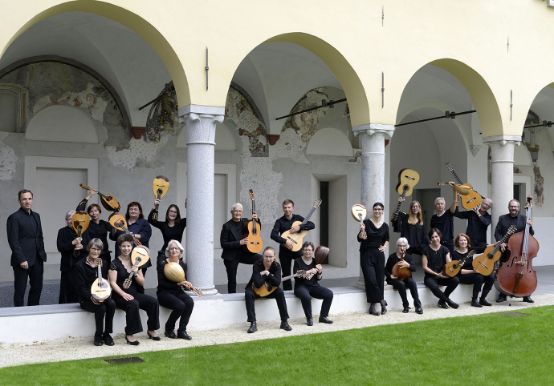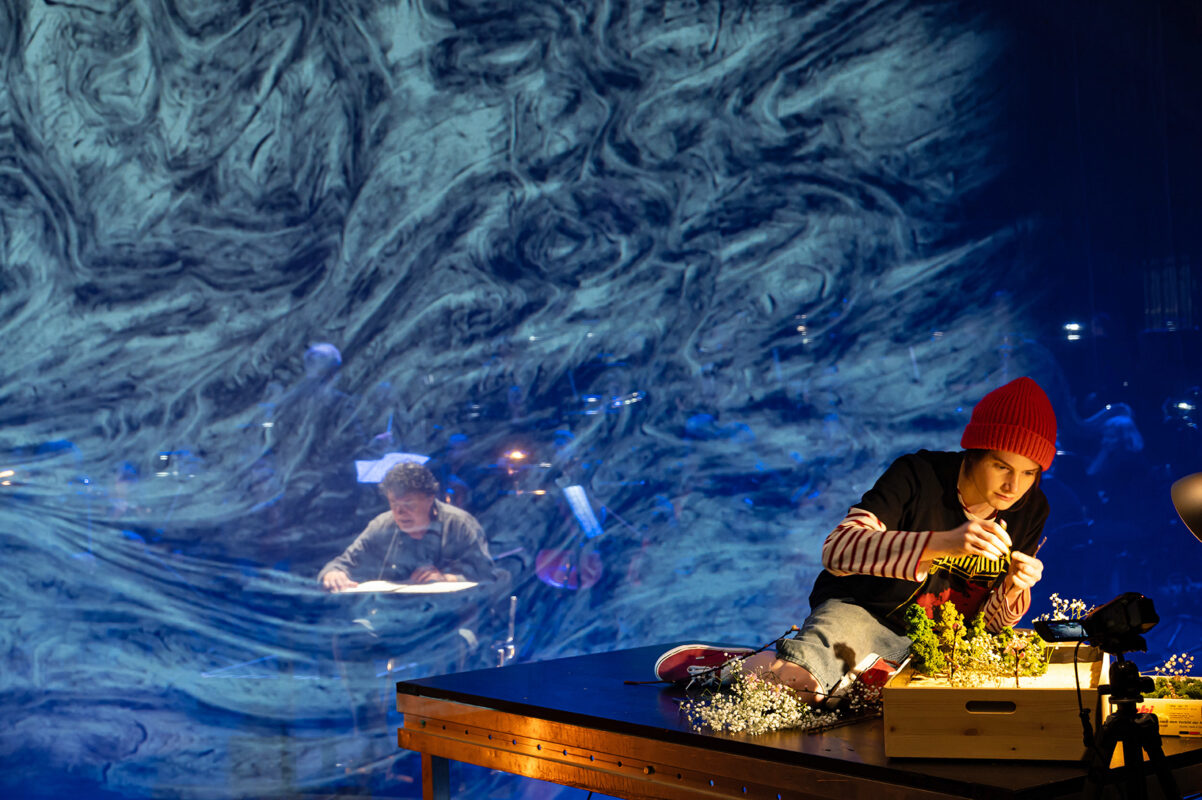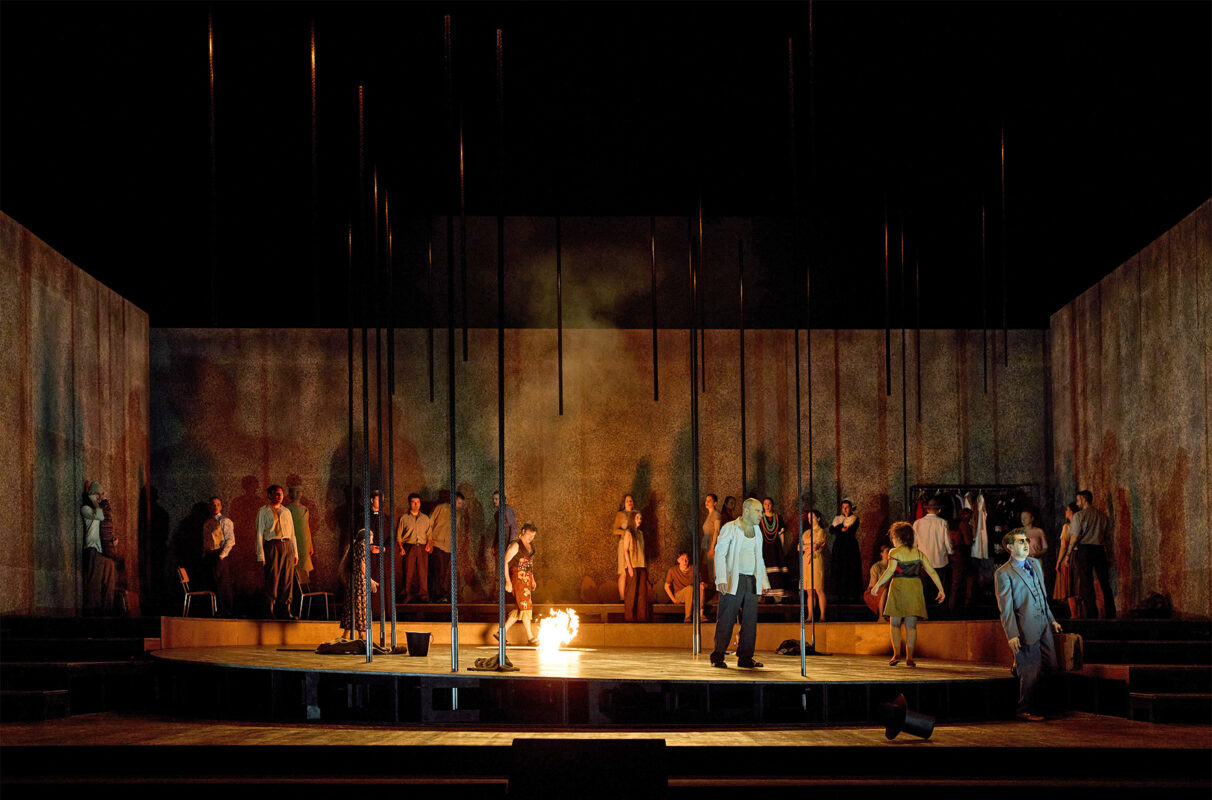Plucked string music festival: Inspired by south and north
The Zupfmusik-Verband Schweiz celebrated the full century of its existence with a festival in Zurich on April 2 and 3. The association's orchestra zupf.helvetica premiered a commissioned composition by Ramon Bischoff.

Integration is easiest for new arrivals from abroad if they get involved in an association. You get to know people, do things together and can distinguish yourself as a hands-on, i.e. socially useful person. Switzerland is a country of associations. But this was apparently not always the case, as a 100-year-old article from the magazine Modern folk music shows. In it, the Swiss are described as a nation of lone wolves who are completely unsuited to the club system.
The article reflects the resentment that the author obviously harbored after a 10-year odyssey. After the first initiatives, it took that long for the Swiss Mandolinists' and Guitarists' Association to be launched on November 13, 1921. Immigrants also played a key role in the eventual happy outcome, as SP city councillor-to-be Simone Brander explained in her Sunday speech on the 100th anniversary of the association, which has since been renamed the Swiss Mandolinists' and Guitarists' Association. Swiss Plucked Music Association underlined the renamed association. This was no coincidence. As Vreni Wenger-Christen's commemorative publication beautifully explains, plucked string ensembles and orchestras in Switzerland originated from outside. Immigrants from Italy brought sociable music-making on plucked instruments over the Gotthard from the south, while the Wandervogel movement radiated to us from the north. What both influences had in common was that they appealed to broad sections of the population who were excluded from conservatories and bourgeois musical life.
These origins can still be felt today. For example, the Amando Zurich Mandolin Orchestra, one of the ensembles that provided the musical backdrop to the ceremony on Sunday morning, was founded in 1910 as the Trämler Orchestra. They were and still are amateurs who achieve amazing things with dedication and under professional direction. What has changed since then is the breadth of the movement, mentioned association president Sandra Tinner in her entertaining speech. While 22 associations joined forces when the association was founded, it now consists of seven orchestras and 30 individual members. The festival was above all a family reunion. People knew each other and exchanged memories and anecdotes.
"Swarms" - an adventure
But don't think that the association is mainly looking backwards. On Saturday, a not inconsiderable part of the musical festival program was played by young people. Plucked string orchestras and ensembles from the Zurich, Baar, Stans, Horgen, Basel and Uster-Greifensee music schools showed that enthusiastic young musicians are on the rise. And with the zupf.helvetica association orchestra, founded in 2017 and led by Sonja Wiedemer and Christian Wernicke, there is an ensemble ready to take on this new generation and offer them a perspective.
pluck.helvetica wants to represent Swiss plucked string music nationally and internationally and is focusing on the strategy of expanding its repertoire through commissions. While the 2019 commission for the first such project with Anina Keller went to a specialist in the genre, Ramon Bischoff comes from a completely different musical corner for this year's project. The musician, who works as a sound engineer, often experiments with alternative tuning systems and also writes a lot of electro-acoustic music. The sound world of the plucked string orchestra was new territory for him. The result of the collaboration, the piece Schwärme, which was premiered on Sunday, was therefore an adventure for both sides.
In his composition, Bischoff works with sound effects that may be unfamiliar to many, yet he has listened carefully and used the body of sound effectively and adequately. The title alludes to the flocking behavior of birds or fish, which seem to move chaotically and yet suddenly act in a very coordinated manner and change direction in a targeted manner. The tremolo, the mandolin cliché par excellence, is used appropriately for the chaotic confusion, while clear rhythms organize the movement in between. Slightly different tunings meet tempered tuning and create beats, which in turn mix with tapping and scratching noises. The result is an interesting soundscape that elicits unusual sounds from the instruments. Only the addition of the double bass indicates that a pure plucked string orchestra does have some tonal limitations.








